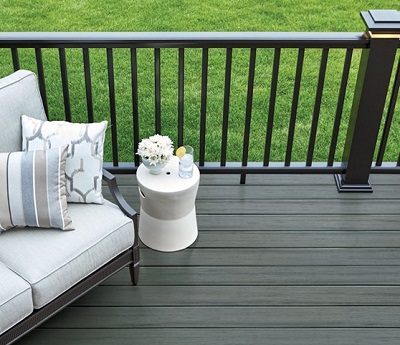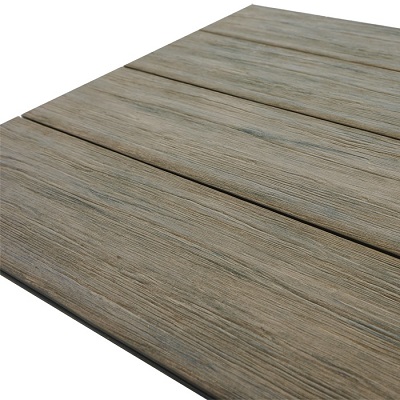
Composite decking has been an outdoor living favourite for over 20 years, but despite its popularity, there are still lots of myths floating around the internet which completely put people off from buying it. In this blog, we take a look at some of the most common misconceptions about composite deking to show you why composite decking is a great choice for any home.
1. Composite decking requires a lot of maintenance
This is something that people often think, but it simply isn't true. It's easy to understand why someone who's only ever experienced timber decking would believe that any kind of deck would be high maintenance, but that's where composite and timber decks differ.
Natural timber decks require a lot of work if you want to maintain their structure and colour. Left without a stain or sealant treatment, timber boards can suffer from water ingress, start to fade and eventually crack and split. This creates an unsightly (and quite often dangerous) surface that would undoubtedly put anyone off having a deck installed again. To keep a timber deck looking its best, an annual sand, stain and seal treatment is required.
In comparison, composite decking requires a fraction of the work to keep it looking pristine. Designed with a durable polymer coating, the colour and texture of composite decking is preserved without demanding a rigorous maintenance routine. For that reason, composite decking is actually a great upgrade if you want to move away from high-maintenance timber decking.
2. Composite decking has an unnatural, plastic finish?
If you've never seen composite decking up close, then you might believe the myth that composite decking looks unnatural. Before we explain how composite decking is manufactured to look just like real wood, we want to give you the opportunity to see our beautifully wood-like composite decking for yourself.
Order a sample here >

When composite decking first hit the market 20 years ago, it did gain a bit of a reputation for having a 'plastic' or 'unnatural' look. Nowadays, we use more advanced manufacturing processes to create composite decking boards with a realistic wood effect. Now you can choose from a huge selection of wood grains and colours that look just as natural as real wood.
3. Composite decking is not eco-friendly
When people find out that composite decking is made using a combination of wood and plastic, they instantly assume that it's not an eco-friendly option, but here at DeckPlus, we are dedicated to making our decking in a sustainable way.
Some decking companies may use newly-manufactured materials to create their composite decking, but we use reclaimed materials from other production sites to create composite decking that's environmentally friendly. Most of the plastic and wood fibres that go into DeckPlus composite decking are waste materials from other industries, that would otherwise have been sent to landfills.
We work to strict regulations and guidelines that monitor the emissions we produce, and we even recycle the water that's used to cool the deck boards as they travel down the production line so that every part of the manufacturing process is as sustainable as possible.
Read More: Our Eco-Friendly Composite Decking
So now you know the truth about these composite decking myths, we hope you can make a more informed decision about your decking purchase! If you have any further questions about our composite decking, our experienced sales team are happy to help you. Call us on 0800 028 8756.